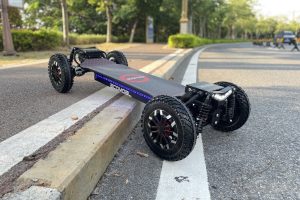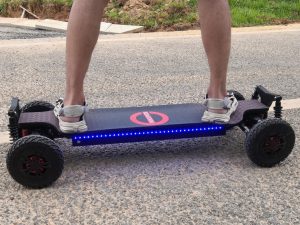Have you ever wondered what the main differences are between longboards and skateboards? While they may look similar at first glance, longboards, and skateboards were actually designed for different purposes and riding styles. This article will explain the key design differences and explore how each board is typically used.

By the end, you’ll understand the fundamentals of what sets longboards and skateboards apart so you can choose the right one for your needs and interests. Let’s start by taking a closer look at the history behind these boards.
History of Longboards and Skateboards
The history of longboards and skateboards has been shaped by different origins and early developments. Skateboards first emerged in the 1950s as surfers in California looked for ways to satisfy their stoke during times away from the ocean waves. Riding on roller skate wheels attached to planks of wood, they captured the flow and feeling of surfing inland.
Longboards developed later, tracing back to the first long wooden cruisers ridden for transportation in the late 60s. Steep-downhill runs and high speeds defined the new culture surrounding long-distance pushes on large wooden decks. While skateboarding continued evolving tricks and techniques in emptied swimming pools, longboarding established itself as optimal for cruising shorelines and scenic routes. These divergent beginnings established longboarding and skateboarding as distinctly different disciplines and cultures that remain today.
Design Differences
When it comes to design, longboards, and skateboards differ in several key aspects. Longboard decks typically range from 38-48 inches in length, offering a larger surface for footing during long-distance cruising. Their shape is also more cruiser-oriented, with a slight downward concave designed for stability rather than leverage tricks. Skateboard decks, on the other hand, are smaller, usually between 28-33 inches, with a pronounced concave that helps pop the board for higher maneuverability. Wheel sizes also differ – longboard wheels are larger, between 60-70mm, optimized for speed and smoothing rough roads. Skateboard wheels are harder and smaller, around 50-55mm, providing responsiveness essential for technical street maneuvers. Finally, longboard truck attachments are more turned out and carvy, adjusting to changes in direction with ease. Skateboard trucks are tighter and turn straight for quick flipping and spinning over obstacles.

Riding Style Differences
Riding styles of longboards and skateboards directly correspond to their intended uses. Longboarding is focused more on cruising – simply enjoying lengthy rides from point A to B. With its larger and smoother design, longboarding is generally a more relaxing experience meant for covering distance. Skateboarding, on the other hand, centers around executing tricks like ollies, kickflips, and grinds through constant manipulation of the board through kicks, flips, and spins. Skatepark obstacles and street features like stairs, rails, and ledges are flourished upon. Complex tricks combos involve various stance positions and chain different maneuvers sequentially. The concave pop of skateboards makes it highly maneuverable for constant aerial adjustments over obstacles. As a result, skateboarding requires a higher degree of technical balance, bravery, and practice to perform assorted tricks.
Terrain Suitability Differences
When it comes to terrain suitability, longboards, and skateboards each have strengths that match certain environments. With its shock-absorbing wheels and carvy trucks, longboards excel on longer commutes over roads, bike paths, and other smooth surfaces. Their larger size provides stability over cracks, gravel, or small debris that may be encountered. In comparison, skateboards perform best in skateparks and streets featuring complications like staircases, manual pads, and gaps that facilitate trick tricks. Their smaller design allows technical elements to be cleanly rolled over or grinded along. While a longboard can handle mellow park terrain easily enough, steep inclines, tight cornering, and rapid tricks are better left to dedicated skateboard setups. Choosing the right wheel for the path ahead ensures a comfortable and safe ride devoid of unwanted wobbles.
Culture and Lifestyle Differences
Culture and lifestyle surrounding longboarding versus skateboarding exhibit differences that stem from their diverse disciplines. Longboarders tend to gather for organized group rides through scenic routes aimed at enjoying the journey itself. Larger wheels allow for distances much farther than skateboard setups permit. Competitions center around downhill racing on challenging terrain and slopes at high speeds. Ambiance fosters relaxation and nature appreciation rather than extreme daring. In contrast, skate culture circles around mastering new tricks in parks and at organized contests. Video parts displaying progression flourish online. The emphasis lies on the constant pushing of boundaries, undertaking riskier stunts to cement one’s status in the scene. Sponsorships flow from impressing within the competitive realm. Both worlds offer communities with distinct atmospheres, appealing to varying interests within board culture.

Conclusion
In conclusion, longboards and skateboards each have their merits depending on personal needs and interests. At their core, longboards prioritize distance cruising through larger sizes and construction optimized for stability and shock absorption over longer rides. Skateboards focus on technical tricks enabled by their compact pop and bite for maneuvering obstacles.
In terms of terrain, longboards thrive on paved paths and roads, granting the luxury of comfort over cracks and rough surfaces. Skateboards perform best where complications arise frequently, like street obstacles or dedicated skateparks.
As for culture, longboarders gather for peaceful group joyrides while skaters center around progressive tricks at competitive events.
Ultimately, deciding between longboard or skateboard relies on assessing your priorities – relaxation through cruising nature versus pushing progression through tricks, smooth trails versus urban complications. Both deliver memorable rides when complimenting one’s style of riding and environment.
Read More
- Electric Longboard Skateboards Rain – Ecomobl
- Eco Friendly Electric Skateboard – Ecomobl
- Electric Skateboards Safety Precautions – Ecomobl
- 6 Expert Tips For Electric Skateboarding – Ecomobl
- Electric Skateboards Boost Office Return – Ecomobl




